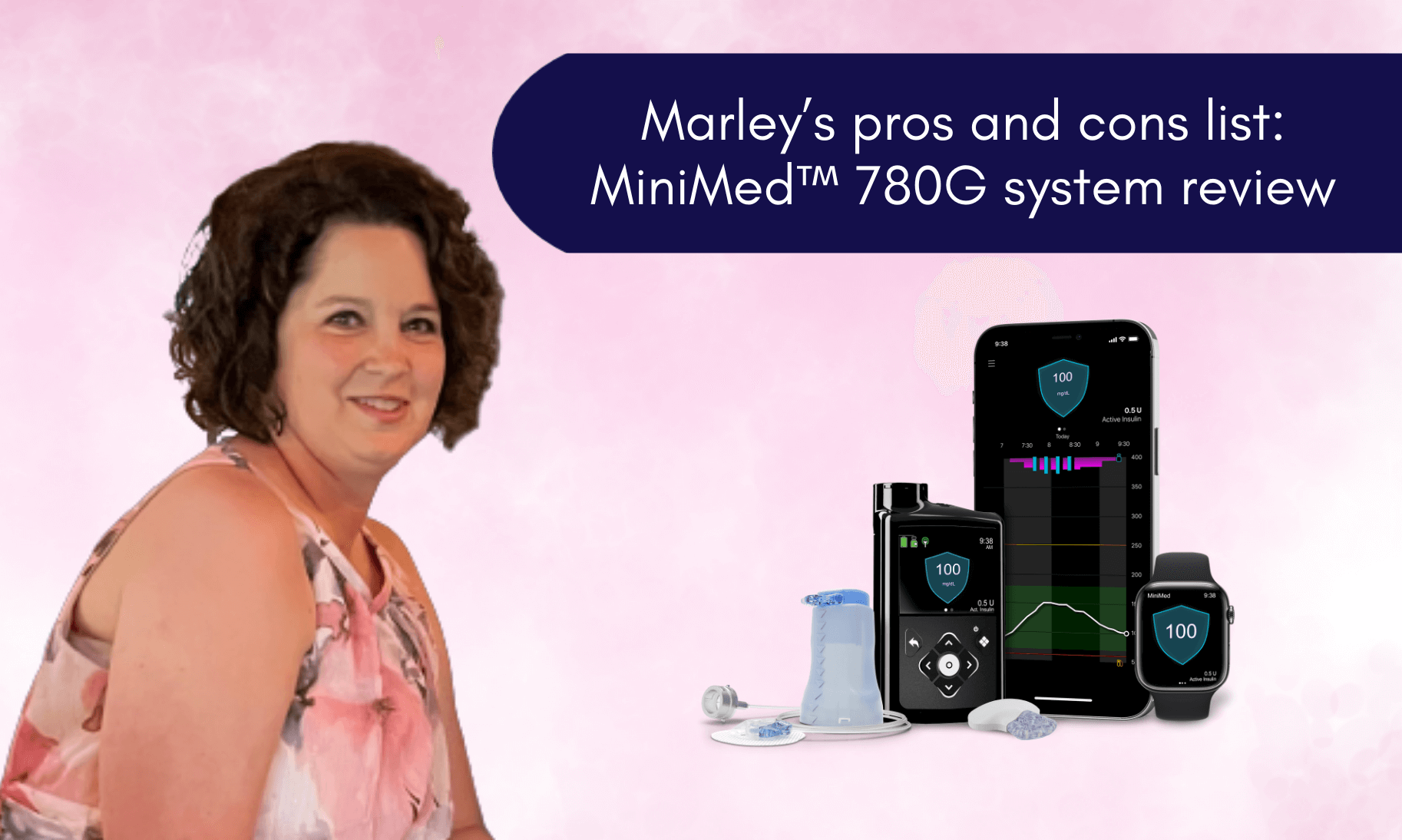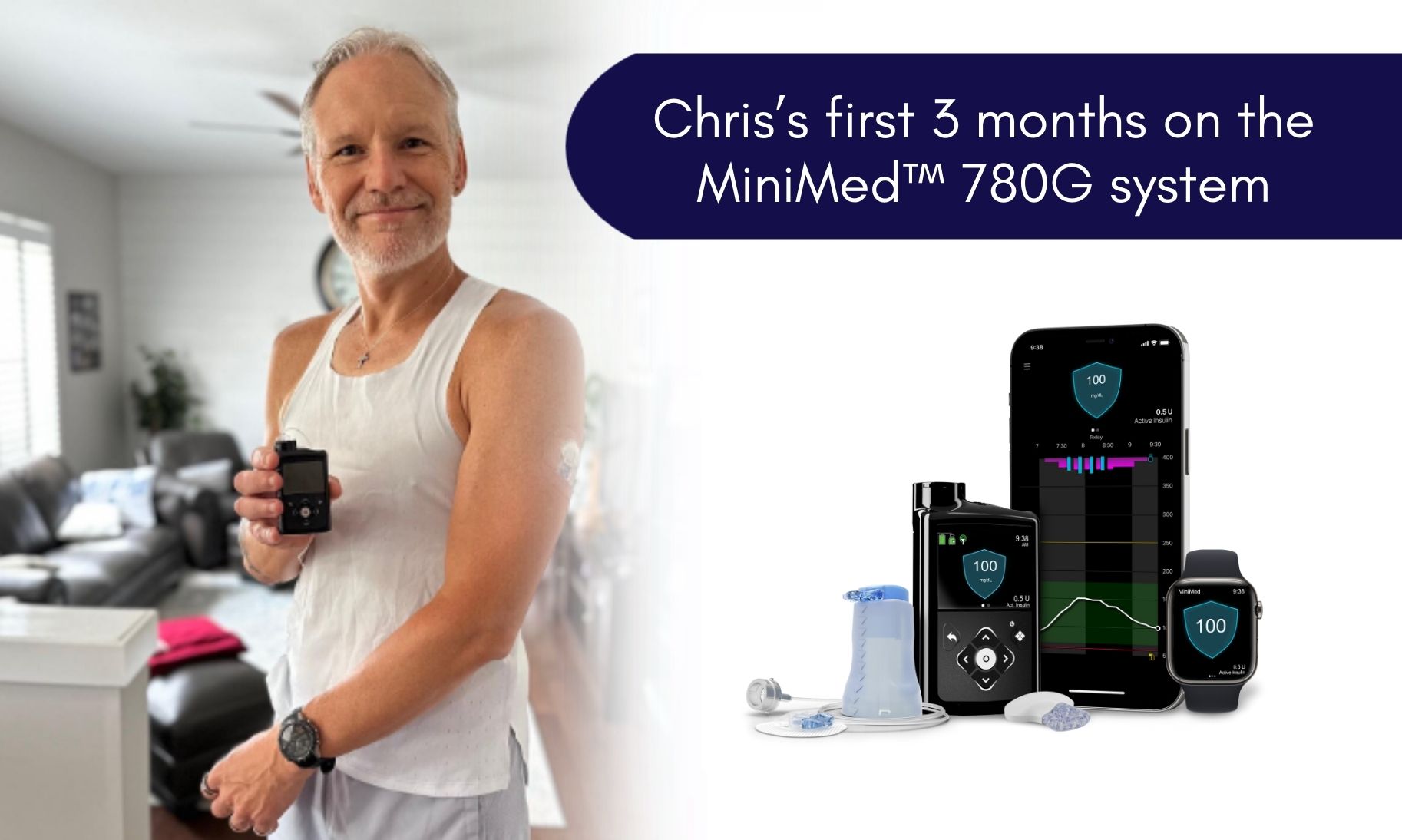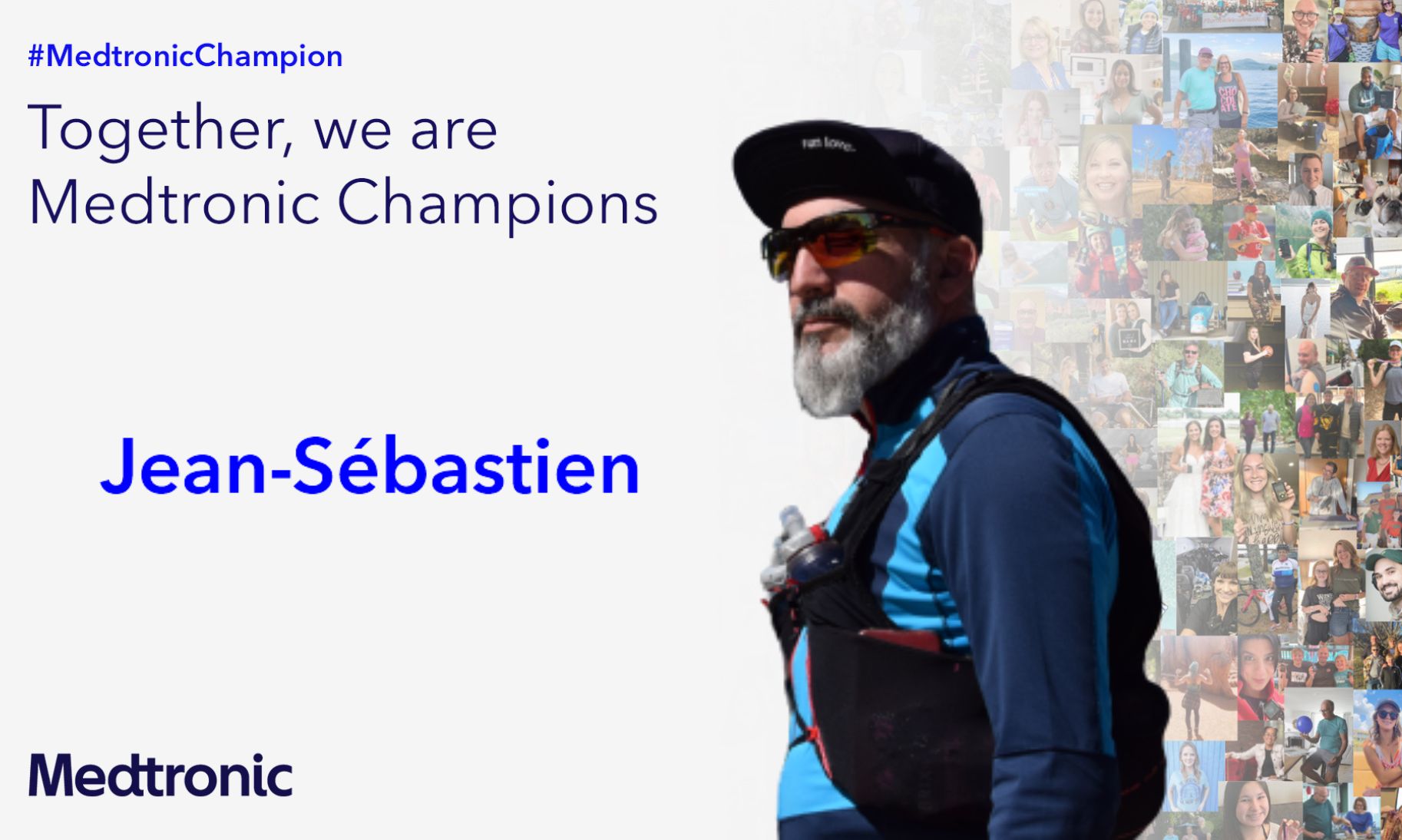Switching back from a pod to an insulin pump

Meet #MiniMedChampion Christi
Meet Christi McWhiney, who’s been living with type 1 diabetes for 53 years and has been on insulin pump therapy for 25+ years. Christi, a dedicated gym-goer who currently lives in Louisiana, began her journey with Medtronic pump therapy with the MiniMed™ Paradigm™ pump.
She switched to an insulin pod for about a year, and then returned to Medtronic and upgraded her MiniMed™ 770G system to the MiniMed™ 780G system. Check out her experience on the different therapy options below.
Diabetes diagnosis
I was diagnosed with type 1 when I was seven years old. From what I remember and what my parents had told me, I was just sleeping a lot, I was thirsty a lot, and I think I had even wet the bed. My mom was a medical technologist, so she drew my blood and took a look at my sugars — I don’t know how long it would’ve gone on unless she had realized that something was wrong.
I went into the hospital for about a week, came out, and had to give my own injections. I remember practicing giving shots on an orange, and we had the test tubes to drop pills in to do urine tests. We’ve come such a long way since then!
Experience using an insulin pod
My endocrinologist recommended I give [an insulin pod] a shot. I was on it for about 18 months, and it worked well in the beginning. I’d wear the sensor on my stomach and the pod on my corresponding arm and it seemed good. But after about a year, I started to notice a lot of technical issues — the sites would go bad quite often, the pods would malfunction, I’d lose insulin. I kept running out of insulin and having to change the pods a lot.
Making the switch back to a Medtronic insulin pump
During my pod trial, I had gotten some emails from Medtronic that I was eligible for the MiniMed™ 780G pump software upgrade. I was tired of fighting all the technical issues I was having with the pod — I just had to change my site out like seven times, and I thought, “This is crazy…this is nuts!” So, I hooked my MiniMed™ 770G back up and, after feeling much better, I asked to upgrade. My endo wrote me a prescription for the MiniMed™ 780G system with Guardian™ 4 sensor supplies, and I’m so glad to be back with Medtronic.
Pod to pump comparison
Review of insulin pods
With the pod, I liked that it didn’t have any tubing. But it felt huge to me, and your pod and sensor had to have “line of sight,” so it was tricky trying to change them and coordinate the sites so they could “see” each other. The pods also stuck so well (I used Skin-Tac™), but they’d leave huge bruises when I pulled them off! So, walking around looking like that was getting old too.
The [sensor I used with the pod] was nice, but it had super annoying alarms that were so loud; I found myself silencing them quite a bit. Now, I hardly ever silence mine unless I’m in church!
Review of MiniMed™ 780G insulin pump system
My favorite feature is definitely the auto correction and how it helps manage high sugar levels.† When I was on the pod, if your blood sugar went up, you just had to keep bolusing, so you were constantly attached to the separate touchscreen device. With the MiniMed™ 780G system, my nutritionist told me I didn’t need to stress as much when I miscalculated my carbs because the system would help me out, and I think that’s the best thing I’ve ever seen.
Peace of mind is huge for me, so I love knowing that the MiniMed™ 780G system has my back. With the pod, I wasn’t always sure.
I also love the flexibility of the CGM. With the Guardian™ 4 sensor, I can wear my pump on the other side, and it still picks up the signal with no interference.
“I am a MiniMed Champion because I’ve never let my type 1 diabetes hinder me from anything I wanted to do, whether that’s lifting weights every morning, going swimming in Mexico,* or just cutting our grass at home. And the MiniMed™ 780G pump doesn’t inhibit me from doing anything — it frees me up so I can do whatever I want to do.”
The testimonial above relates an account of an individual’s experience using a Medtronic device. The account is genuine, typical, and documented. However, this individual’s experience does not provide any indication, guide, warranty, or guarantee as to the response or experience other people may have using the device. The experience other individuals have with the device could be different. Experiences can and do vary. Please talk to your doctor about your condition and the risks and benefits of Medtronic devices.
Footnote
† Taking a bolus 15 – 20 minutes before a meal helps to keep blood sugar levels under control after eating.
* At the time of manufacture and when the reservoir and tubing are properly inserted, your pump is waterproof. It is protected against the effects of being underwater to a depth of up to 12 feet (3.6 meters) for up to 24 hours. This is classified as IPX8 rating. See user guide for more details. The sensor and transmitter are water-resistant at 8 feet (2.4 meters) for up to 30 minutes. CGM readings may not be transmitted from the CGM to the pump while in water.
Important safety information: MiniMed™ 780G system with SmartGuard™ technology with Guardian™ 4 sensor
The MiniMed™ 780G system is intended for continuous delivery of basal insulin at selectable rates, and the administration of insulin boluses at selectable amounts for the management of type 1 diabetes mellitus in persons seven years of age and older requiring insulin as well as for the continuous monitoring and trending of glucose levels in the fluid under the skin. The MiniMed™ 780G system includes SmartGuard™ technology, which can be programmed to automatically adjust insulin delivery based on the continuous glucose monitoring (CGM) sensor glucose values and can suspend delivery of insulin when the sensor glucose (SG) value falls below or is predicted to fall below predefined threshold values.
The Medtronic MiniMed™ 780G system consists of the following devices: MiniMed™ 780G insulin pump, the Guardian™ 4 transmitter, the Guardian™ 4 sensor, One-press serter, the Accu-Chek™ Guide Link blood glucose meter, and the Accu-Chek™ Guide test strips. The system requires a prescription from a healthcare professional.
The Guardian™ 4 sensor is intended for use with the MiniMed™ 780G system and the Guardian 4 transmitter to monitor glucose levels for the management of diabetes. The sensor is intended for single use and requires a prescription. The Guardian™ 4 sensor is indicated for up to seven days of continuous use.
The Guardian™ 4 sensor is not intended to be used directly to make therapy adjustments while the MiniMed™ 780G is operating in manual mode. All therapy adjustments in manual mode should be based on measurements obtained using a blood glucose meter and not on values provided by the Guardian™ 4 sensor. The Guardian™ 4 sensor has been studied and is approved for use in patients ages 7 years and older and in the arm insertion site only. Do not use the Guardian™ 4 sensor in the abdomen or other body sites including the buttocks, due to unknown or different performance that could result in hypoglycemia or hyperglycemia.
WARNING: Do not use the SmartGuard™ feature for people who require less than 8 units or more than 250 units of total daily insulin per day. A total daily dose of at least 8 units, but no more than 250 units, is required to operate in the SmartGuard™ feature. |



